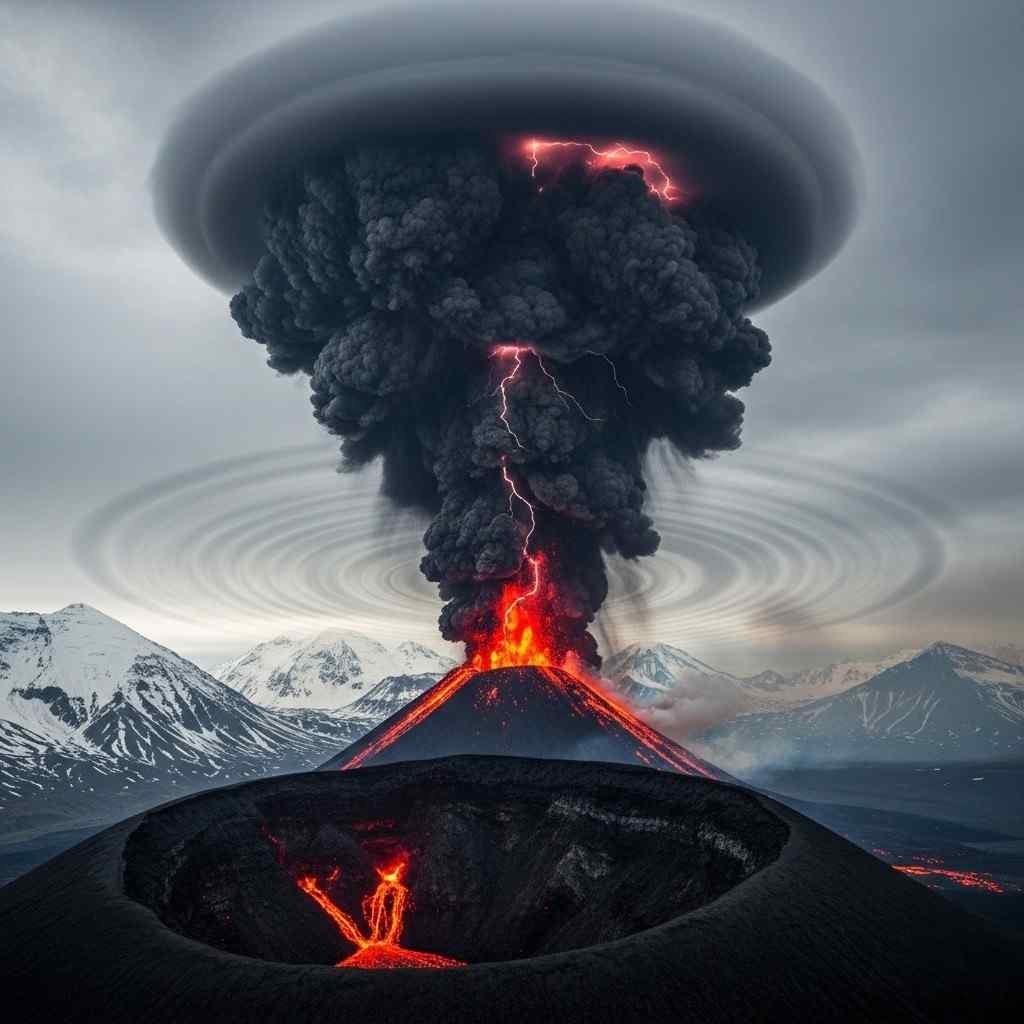Russian Volcano Eruption Earthquake—On August 4, 2025, in the Kamchatka Peninsula, Russia, a dramatic and rare geological event occurred as the Krasheninnikov volcano erupted for the first time in over 600 years, following closely on the heels of one of the largest earthquakes the region has ever experienced.
Eruption Details of the Russian Volcano Eruption Earthquake
On August 3, just after sunrise local time, the long-dormant Krasheninnikov volcano in Russia’s remote Kamchatka Peninsula spewed ash nearly 20,000 feet (6 kilometers) into the sky. The volcano, which had shown no historical activity since at least the 16th century, caught scientists and local monitoring agencies by surprise.
The ash plume was visible from satellites and tracked moving eastward over the Pacific Ocean. Thankfully, the volcano is located in a sparsely populated nature reserve, so no injuries or significant damage have been reported.

Link to Recent Earthquake Activity?
The eruption came just days after a magnitude 8.8 earthquake struck off the coast of Kamchatka on July 29, shaking the region and triggering tsunami warnings as far as Alaska and Japan. This eruption is now being studied as a classic example of a Russian Volcano Eruption Earthquake event, where seismic activity likely triggered volcanic unrest. Seismologists now suspect that the earthquake may have destabilized underground magma chambers, triggering the eruption.
In fact, another volcano in the area—Klyuchevskoy, one of Eurasia’s most active—also showed signs of increased volcanic activity shortly after the quake.
ALSO READ: What Is Software keepho5ll? Everything You Need to Know About This New Privacy Tool
Aviation Warning
Russia’s Kamchatka Volcanic Eruption Response Team (KVERT) issued an “orange” aviation alert, warning that volcanic ash could pose a hazard to aircraft flying through trans-Pacific air routes. However, no major disruptions have been reported so far.
A Rare Historic Event
The Smithsonian’s Global Volcanism Program notes that there is no verified historical record of Krasheninnikov erupting since humans began tracking such events. Some scientific models estimate the last eruption occurred around 1550 A.D., though no eyewitness accounts exist. This makes the current event not just unusual—but truly historic.
Global Scientific Interest
Volcanologists and geologists worldwide are now turning their attention to Kamchatka. Scientists worldwide are focusing on this rare Russian Volcano Eruption Earthquake event to better understand how earthquakes influence volcanic activity. The peninsula, located in Russia’s Far East, is part of the “Ring of Fire,” a seismically active zone around the Pacific Ocean known for earthquakes and volcanoes.
The dual occurrence of a massive earthquake and a major volcanic eruption in such a short span is rare—and could offer scientists new insights into how tectonic stress can influence volcanic behavior.
Why It Matters
While this eruption poses little direct threat to the U.S., the Russian Volcano Eruption Earthquake reminds us how interconnected Earth’s systems are and how events in one region can have global effects. It’s a reminder of how connected Earth’s systems are—and how events in one corner of the globe can ripple through international air travel, climate patterns, and scientific understanding.
Stay tuned as researchers continue to monitor volcanic activity in the region. More aftershocks and possible secondary eruptions are still possible.